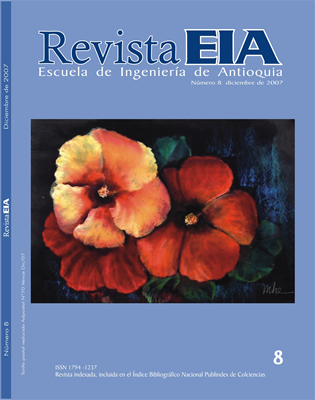CULTIVO DE TEJIDO CARTILAGINOSO ARTICULAR: ACERCAMIENTO CONCEPTUAL
CULTIVO DE TEJIDO CARTILAGINOSO ARTICULAR: ACERCAMIENTO CONCEPTUAL


This work is licensed under a Creative Commons Attribution-NonCommercial-NoDerivatives 4.0 International License.
Copyright statement
The authors exclusively assign to the Universidad EIA, with the power to assign to third parties, all the exploitation rights that derive from the works that are accepted for publication in the Revista EIA, as well as in any product derived from it and, in in particular, those of reproduction, distribution, public communication (including interactive making available) and transformation (including adaptation, modification and, where appropriate, translation), for all types of exploitation (by way of example and not limitation : in paper, electronic, online, computer or audiovisual format, as well as in any other format, even for promotional or advertising purposes and / or for the production of derivative products), for a worldwide territorial scope and for the entire duration of the rights provided for in the current published text of the Intellectual Property Law. This assignment will be made by the authors without the right to any type of remuneration or compensation.
Consequently, the author may not publish or disseminate the works that are selected for publication in the Revista EIA, neither totally nor partially, nor authorize their publication to third parties, without the prior express authorization, requested and granted in writing, from the Univeridad EIA.
Show authors biography
Con los métodos disponibles en el momento para la reconstrucción de tejidos, la reparación de defectos del tejido cartilaginoso no ha sido alcanzada completamente. Por esta razón, se ha recurrido a la ingeniería de tejidos, que busca el desarrollo de estrategias para obtener sustitutos funcionales de tejido cartilaginoso, con el fin de ofrecer soluciones terapéuticas a pacientes con pérdida o falla de este tipo de tejido. En el presente estudio se hace una breve revisión de la anatomía, histología, fisiología y patología del tejido cartilaginoso y de las terapias usuales para su reparación, además de dar a conocer el papel cumplido por la ingeniería de tejidos y los biomateriales en el desarrollo de soluciones terapéuticas en este campo.
Abstract: The currently available methods for tissue repair have not been able to restore completely functional cartilage tissue. For this reason, tissue engineering has developed strategies for fabricating cartilage substitutes in order to offer therapeutic solutions to patients that could suffer from any kind of cartilage disease. The purpose of this article was to review the anatomy, histology, physiology, pathology of cartilage, and the therapies commonly used for repairing this tissue. This article also shows the role established by tissue engineering and biomaterials in this field.
Article visits 349 | PDF visits 182
